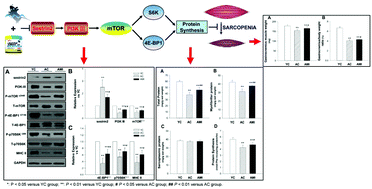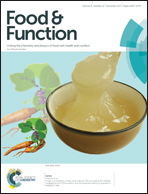A potential strategy for counteracting age-related sarcopenia: preliminary evidence of combined exercise training and leucine supplementation
Abstract
Previous research has demonstrated the positive effects of concurrent/combined aerobic and resistance exercise or leucine supplementation on skeletal muscle protein synthesis (MPS) and hypertrophy in aging organisms. However, the effects of a multimodal intervention which combines both aerobic and resistance exercise and leucine supplementation has not been fully elucidated. Eighteen month old and 2 month old C57BL/6 mice were assigned to aging control (AC, n = 8), aging and multimodal intervention (AMI, n = 8) and young control (YC, n = 8). Mice in the YC and AC groups were fed an alanine-rich diet (3.4%), and mice in the AMI group received an isonitrogenous leucine-supplemented (5%) diet in combination with combined aerobic (30 minutes swimming) and resistance exercise training (incremental jumping submersed in water with overload corresponding to 40%–50% body weight) for a total of 4 weeks. The gastrocnemius muscles were dissected for western blotting detection (signaling proteins involved in MPS) and the ex vivo determination of protein synthesis and protein content. The muscle strength of the hind limbs was measured pre-experiment and repeated once per week on Sunday for 4 weeks. Mice in the AC and AMI groups showed lower ex vivo protein synthesis, protein content, expression of signaling proteins involved in MPS, maximal grip strength but higher plasma cortisol compared with the YC group post intervention. When compared to AC mice, the multimodal treatment led to lower activity of Sestrin2, higher expression of PI3K III and the phosphorylation of mTOR, p70S6K and 4E-BP1, as well as higher plasma leucine, wet gastrocnemius muscle weight and muscle weight to body weight ratio. Furthermore, the multimodal intervention induced more pronounced anabolic response such as higher ex vivo protein synthesis rate, total protein content, and myofibrillar fractions in gastrocnemius muscle, and greater maximum grip strength. The present research shows that a multimodal intervention including combined both aerobic and resistance exercise training and 5% leucine supplementation has the potential to maintain skeletal muscle protein synthesis and attenuate losses in muscular strength during the aging process.



 Please wait while we load your content...
Please wait while we load your content...